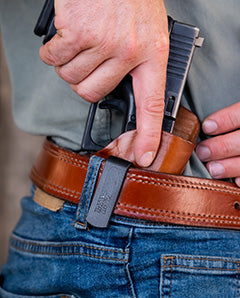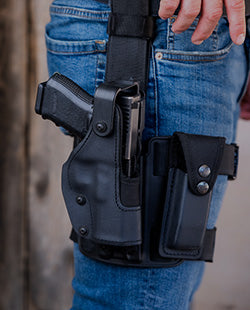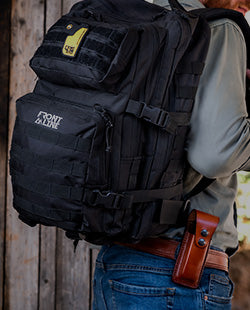When it comes to concealed carry, the question of whether to carry with a round in the chamber or not is a topic of debate. Let's delve into the considerations regarding this practice.
The Need for Readiness
Picture this scenario: the average gunfight occurs within a 3-yard radius, lasts about 3 seconds, and involves no more than 3 rounds being fired. In such a situation, the time-consuming process of racking your slide, loading your firearm, and preparing to return fire seems impractical, to say the least. This highlights the compelling argument for carrying with a round in the chamber, especially for everyday carry.
Moreover, an unloaded gun introduces an additional element of potential failure. Loading a gun typically requires the use of both hands, a luxury that's far from guaranteed during a high-stress encounter. Not to mention, not everyone can handle the pressure of being under attack and still manage to load their weapon.
Another significant aspect is the element of surprise. Countless videos online depict attackers assuming their victims are unarmed and vulnerable, only to be met with an immediate and effective response. This advantage of surprise retaliation is forfeited if your gun is unloaded since loading it would expose your firearm and compromise the element of surprise.
In conclusion, if you carry a weapon for self-defense and intend to use it in life-threatening situations, having a loaded chamber is essential for your firearm to be an effective tool against such threats.
The Safety Aspect
Despite the arguments in favor of loaded carry, there are valid concerns regarding its safety. Accidental discharges have historically been a significant issue, leading to tragic incidents. For individuals who spend time around children who may not be trained in gun safety, extra precautions are advisable when carrying a loaded gun.
Modern firearms have introduced advanced safety mechanisms to mitigate the risk of accidental discharges. These mechanisms vary, from trigger safeties in striker-fired weapons like Glocks to intricate hammer-fired weapon safety systems.
While these advancements have made firearms safer, no system is entirely foolproof. Accidents can still occur, emphasizing the importance of rigorous training. Learning to handle a loaded weapon safely, including drawing it with trigger safety, is essential for responsible gun owners.
The Legal Perspective
Gun laws and the legalities surrounding concealed and open carry are subjects of ongoing debate in the United States. Currently, the general rule is that if you are allowed to open-carry or concealed-carry, whether with or without a permit, you may carry your gun loaded and chambered.
However, it's crucial to note that open-carry is prohibited in several states, making it impossible to carry a loaded gun without a license or permit. Additionally, the legal status of loaded rifles, particularly when kept in vehicles, is under discussion in various states.
Gun laws are not uniform across the United States, as they vary from state to state. It's advisable to stay informed about the ever-changing gun laws and seek legal advice before carrying a loaded gun in public.
Selecting the Right Holster for Loaded Carry
Choosing the appropriate holster for loaded carry is essential. Safety and security are top priorities in this context, and a good holster should address these concerns. Key considerations for holsters in loaded carry scenarios include:
Trigger Protection: Accidental discharges can have dire consequences. Opt for holsters like those from Frontline Holsters, which offer advanced trigger protection through upgraded head lock retention technology, ensuring maximum firearm safety.
Protection from Disarmament: In the event of an attacker attempting to take control of your holstered weapon, the stakes are higher when the gun is loaded. Holsters like the Thumb-Break & SR™ KNG from Frontline are engineered to combat this threat, combining side retention lock and thumb break retaining strap for total firearm security, while enabling a smooth and fast draw when needed.
In conclusion, the decision to carry with a round in the chamber should be guided by considerations of readiness, safety, and legal obligations. Selecting the right holster is a crucial aspect of ensuring both safety and functionality in loaded carry scenarios.











